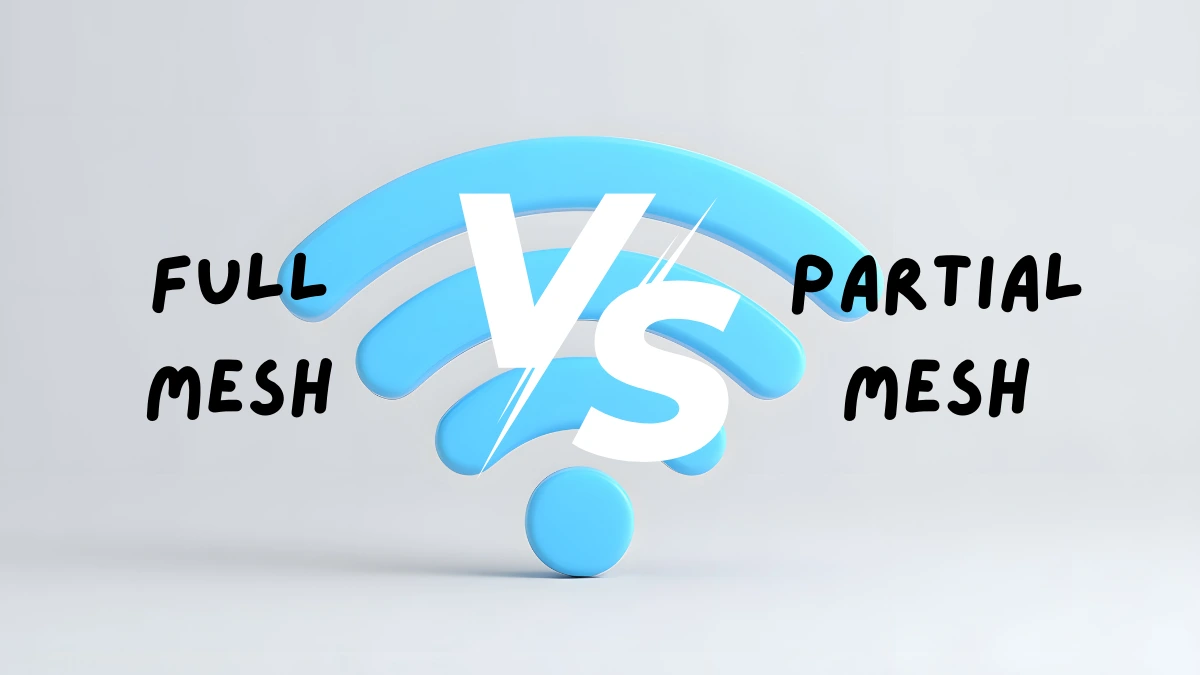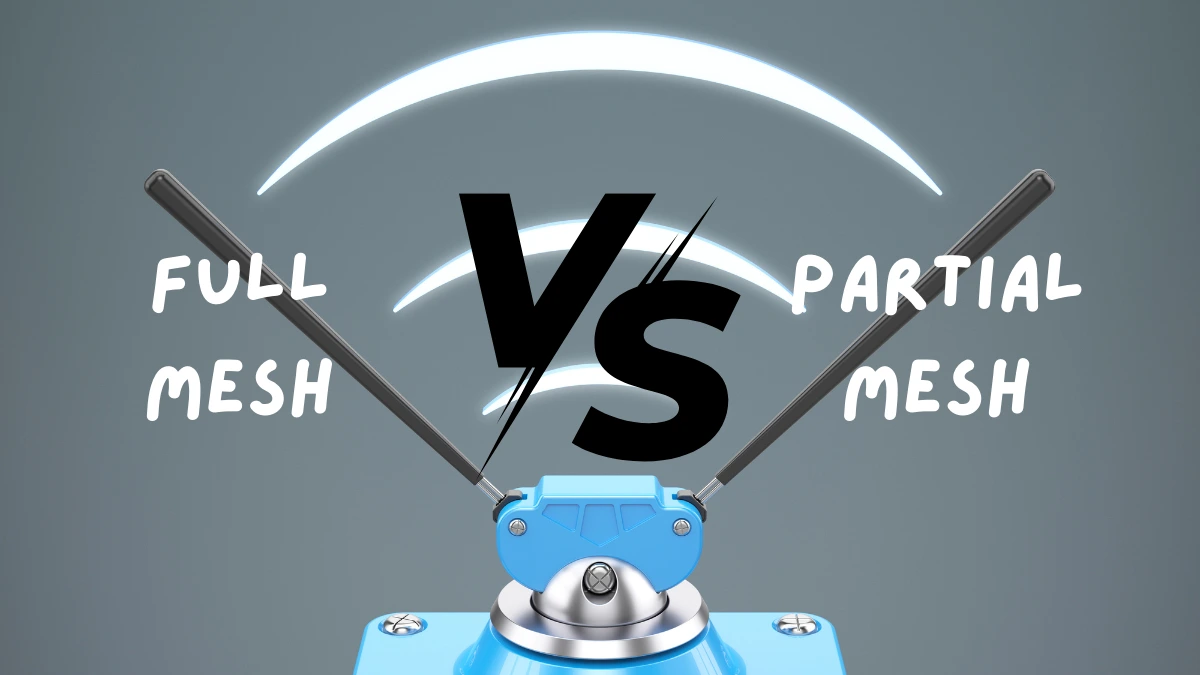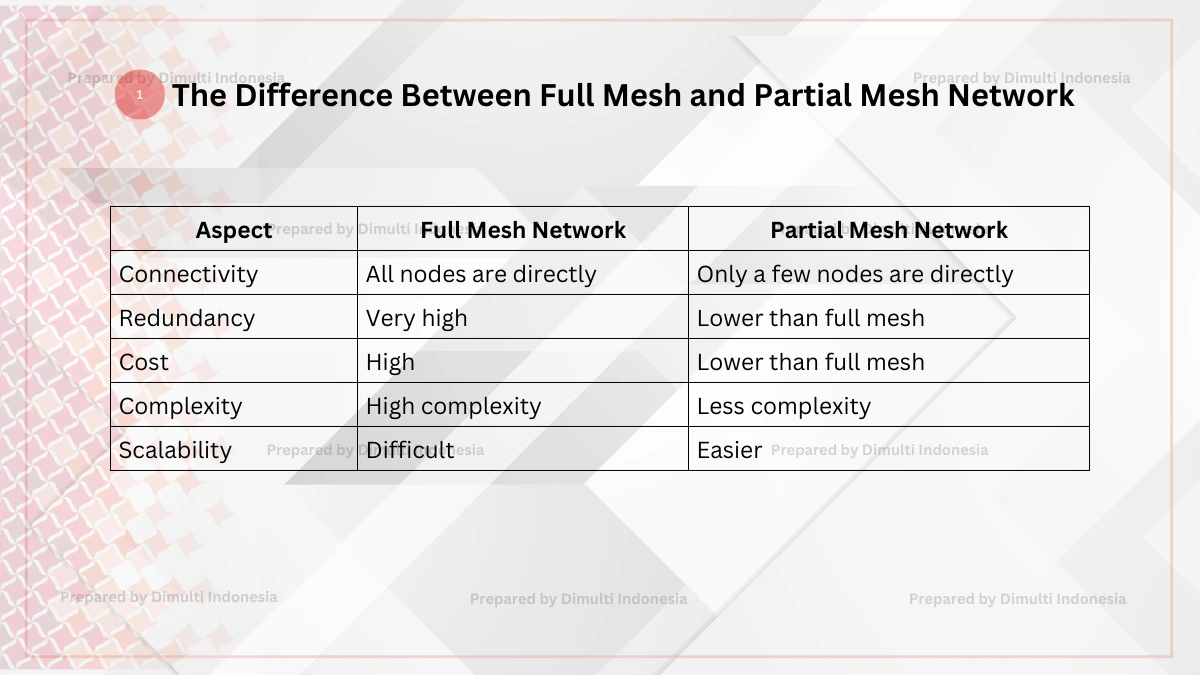A full mesh network and a partial mesh network are the types of WiFi mesh based on topology. Although both maximize the internet network stability throughout the entire area, full mesh vs partial mesh network has some significant differences.
The differences between full mesh vs partial mesh include connection, redundancy, cost, complexity, and scalability.
This article will delve into the important differences between full mesh vs partial mesh to maintain the internet network stability throughout the entire area.
What is a Full Mesh Network?

A full mesh network is a type of WiFi mesh in which each node is directly connected to every other node in the network. This type is highly reliable, has high redundancy, and is less prone to system failures.
However, this system becomes very expensive when implemented on a large scale, as it requires a large number of devices.
What is a Partial Mesh Network?

A partial mesh network is a type of network where not all nodes are directly connected. This system can be used for corporate branch networks or wide-area networks (WAN). Compared to a full mesh network, this system is more cost-effective to implement.
The Difference Between Full Mesh vs Partial Mesh Networks

A full mesh network and a partial mesh network are the types of WiFi mesh based on topology, but they have some differences. Here are five differences between full mesh vs partial mesh network:
1. Connection
Full mesh network: Each device is directly connected to every other device within a single network.
Partial mesh network: Within a single network, only a few nodes are directly connected.
2. Redundancy
Full mesh network: Has high redundancy with nodes connected, so that if one path fails, there are still other alternative paths.
Partial mesh network: Has lower redundancy compared to a full mesh network.
3. Cost
Full mesh network: Requires high costs due to the need for many node devices.
Partial mesh network: Has lower costs compared to a full mesh network.
4. Complexity
Full mesh network: High complexity, as it requires installation with many cables and ports to connect all nodes.
Partial mesh network: Less complex than a full mesh and easier to implement.
5. Scalability
Full mesh network: Difficult to scale for large networks due to its complexity.
Partial mesh network: Easier to scale for large networks as it is less complex than a full mesh with fewer connections.
That’s the difference between full mesh vs partial mesh network that you can consider when choosing the types of WiFi mesh according to your personal needs.
If you need high reliability and speed without worrying about high costs and complexity, a full mesh network is a good choice. However, if you need a balance between reliability and cost with easier implementation, you can choose a partial mesh network.